The latest update of the Oxford English Dictionary (OED), the most authoritative dictionary in the English language, more than doubled the number of Korean-origin words. This record-breaking increase reflects the phenomenal rise of Korea’s cultural profile in recent decades.
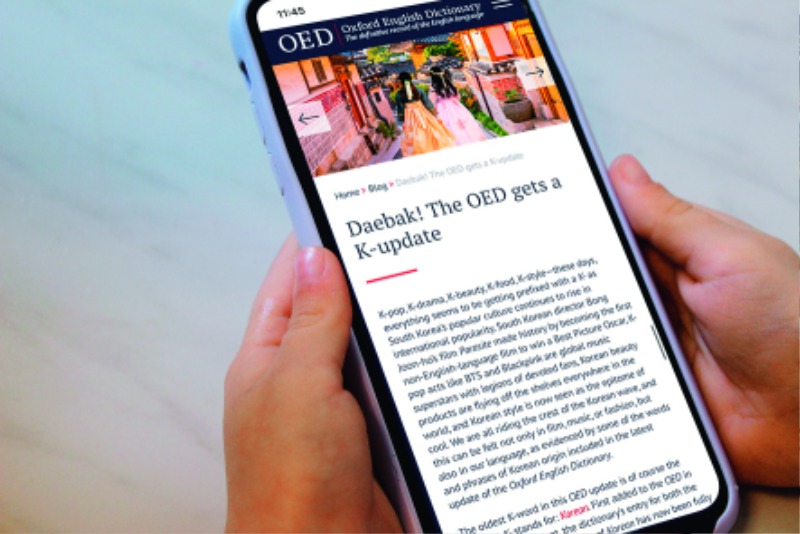
Words of Korean origin rose by twofold in the latest update of the Oxford English Dictionary. The unprecedented increase recognizes the global awareness of Korean culture through K-pop superstar groups, award-winning movies and drama series, trendy fashion and healthy food.
© Shutterstock
Up until the latter half of 2021, the Oxford English Dictionary included 24 Korean words. Then, in one swoop, the OED, the recognized authority on the English language, added another 26, an unprecedented number of words chosen from one language in a single year.
Using one of the new additions, Dr. Danica Salazar, OED World English editor, described the distinctive list as daebak (a windfall or jackpot, or something fantastic and amazing). “We are all riding the crest of the Korean wave, and this can be felt not only in film, music or fashion, but also in our language, as evidenced by some of the words and phrases of Korean origin included in the latest update of the Oxford English Dictionary,” the OED said.
Indeed, many of the new entries are familiar words to fans of Korea’s cultural exports. They have been part of the lexicon of the Korean wave (hallyu) for more than 15 years, seeping into English-language conversations and writings. With global awareness and popularity of Korean entertainment fare and flair showing no signs of losing steam, even more Korean words may have a chance at OED inclusion.
Gradual Buildup
Editions and regular supplements of the OED have expanded the profile of English far beyond its original mongrel mixture of Anglo-Saxon, Norse, Norman French, Greek and Latin. Currently, the dictionary contains some 600,000 words, past and present, used by English-language speakers around the world.
The first edition of the OED was completed 49 years after the project was initiated. The first complete edition, printed in 12 volumes in 1928, comprised some 414,800 entries and more than 1.82 million example quotations from a variety of sources, including literature, movies and songs. But there was not a single Korean word entry.
The first entries related to Korea were included in the 1933 supplement to the first edition: “Korean” and “Koreanize.” Then a 43-year gap followed before six entries were included in the 1976 supplement: gisaeng (women trained in singing and dancing, working as entertainers at the Korean royal court and in provincial centers); Hangul (the Korean alphabet); kimchi (a staple dish consisting of fermented cabbage flavored with various seasonings); kono (a traditional Korean game of strategy); myon (an administrative unit); and makkoli (traditional Korean rice wine). Seven entries were included in the 1982 supplement: sijo (a type of Korean classical vocal music or a Korean verse form consisting of three lines); taekwondo (a Korean martial art); won (the monetary unit of Korea); yangban (the traditional ruling class); ri (an administrative unit); onmun (Korean vernacular, another name for Hangul); and ondol (a traditional underfloor heating system). Thus, the second edition of the OED, published in 1989, contained 15 words of Korean origin.
It was another 14 years before a new Korean-origin word would be added: hapkido (a modern martial art of self-defense). By then, Korean had been shortened in certain contexts to “K” and combined with other words to form new nouns. The first example was “K-pop,” which appeared in Billboard magazine in October 1999, according to the OED, which added the word in 2016. “K-drama” appeared in 2002 in The Strait Times, a Singapore newspaper, the OED says.
K-pop and K-drama spearheaded the Korean wave, which quickened the pace of Korean entries in the OED. They included: bibimbap (a dish consisting of rice topped with sautéed vegetables, meat and chili paste) in 2011; soju (a type of distilled liquor) and “webtoon” (digital comics serialized through online platforms) in 2015; doenjang (fermented soybean paste), gochujang (red chili paste) and K-pop in 2016; chaebol (a large, family-owned business conglomerate) in 2017; and Juche (the political ideology associated with North Korea) in 2019.
aegyo, n. and adj.
A. n.
Cuteness or charm, esp. of a sort considered characteristic of Korean popular culture. Also: behaviour regarded as cute, charming, or adorable. Cf. KAWAII n.
B. adj.
Characterized by ‘aegyo’, cute, charming, adorable.
banchan, n.
In Korean cookery: a small side dish of vegetables, etc., served along with rice as part of a typical Korean meal.
bulgogi, n.
In Korean cookery: a dish of thin slices of beef or pork which are marinated then grilled or stir-fried.
chimaek, n.
In South Korea and Korean-style restaurants: fried chicken served with beer. Popularized outside South Korea by the Korean television drama My Love from the Star(2014).
daebak, n., int., and adj.
A. n.
Something lucrative or desirable, esp. when acquired or found by chance; a windfall, a jackpot.
B. int.
Expressing enthusiastic approval: ‘fantastic!’, ‘amazing!’
C. adj.
As a general term of approval: excellent, fantastic, great
fighting, int.
Esp. in Korea and Korean contexts: expressing encouragement, incitement, or support: ‘Go on!’ ‘Go for it!’
hallyu, n.
The increase in international interest in South Korea and its popular culture, esp. as represented by the global success of South Korean music, film, television, fashion, and food. Also: South Korean popular culture and entertainment itself. Frequently as a modifier, as in hallyu craze, hallyu fan, hallyu star, etc. Cf.
K-, comb. form
Forming nouns relating to South Korea and its (popular) culture, as K-beauty, K-culture, K-food, K-style, etc. Recorded earliest in K-POP n. See also K-DRAMA n.
K-drama, n.
A television series in the Korean language and produced in South Korea. Also: such series collectively.
kimbap, n.
A Korean dish consisting of cooked rice and other ingredients wrapped in a sheet of seaweed and cut into bite-sized slices.
Konglish, n. and adj.
A. n.
A mixture of Korean and English, esp. an informal hybrid language spoken by Koreans, incorporating elements of Korean and English. In early use frequently depreciative.
B. adj.
Combining elements of Korean and English; of, relating to, or expressed in Konglish. In early use frequently depreciative.
Korean wave, n.
The rise of international interest in South Korea and its popular culture which took place in the late 20th and 21st centuries, esp. as represented by the global success of Korean music, film, television, fashion, and food ;= HALLYU n.; Cf. K- comb. form.
manhwa, n.
A Korean genre of cartoons and comic books, often influenced by Japanese manga. Also: a cartoon or comic book in this genre. Cf. MANGA n.2 Occasionally also applied to animated film.
mukbang, n.
A video, esp. one that is livestreamed, that features a person eating a large quantity of food and talking to the audience. Also: such videos collectively or as a phenomenon.
noona, n.
In Korean-speaking contexts: a boy’s or man’s elder sister. Also as a respectful form of address or term of endearment, and in extended use with reference to an older female friend.
oppa, n.
1. In Korean-speaking contexts: a girl’s or woman’s elder brother. Also as a respectful form of address or term of endearment, and in extended use with reference to an older male friend or boyfriend.
2. An attractive South Korean man, esp. a famous or popular actor or singer.
samgyeopsal, n.
A Korean dish of thinly sliced pork belly, usually served raw to be cooked by the diner on a tabletop grill.
skinship, n.
Esp. in Japanese and Korean contexts: touching or close physical contact between parent and child or (esp. in later use) between lovers or friends, used to express affection or strengthen an emotional bond.
trot, n.
A genre of Korean popular music characterized by repetitive rhythms and emotional lyrics, combining a traditional Korean singing style with influences from Japanese, European, and American popular music. Also (and in earliest use) as a modifier, as in trot music, trot song, etc. This genre of music originated in the early 1900s during the Japanese occupation of Korea.
unni, n.
In Korean-speaking contexts: a girl’s or woman’s elder sister. Also as a respectful form of address or term of endearment, and in extended use with reference to an older female friend or an admired actress or singer.
New Entries
The latest OED update occurred in September 2021. In addition to the aforementioned daebak, the update fittingly included hallyu, K-drama, Korean wave and K-, the wellsprings of the new additions.
From the K-pop world came the words oppa, unni and noona, terms of endearment used in fandom circles to address members of popular idol groups; and aegyo (cuteness or charm), a trait that fans expect from K-pop idols. Trot, an old genre of Korean popular music that has enjoyed an immense revival in recent years, was also added.
From K-dramas came hanbok (Korea’s traditional dress), the standard garb in period screenplays; chimaek (fried chicken served with beer), which appears often as a favorite option for dates and on home-delivery menus; and “PC bang” (a computer gaming cafe). Manhwa (a Korean genre of cartoons and comic books) was also added as a separate entry from “webtoon,” an addition in 2015.
Korean food obviously caught the OED’s attention as well; it was the largest subset in the update. In addition to chimaek, the new entries included banchan (side dishes served with rice), dongchimi (a type of kimchi), japchae (cellophane noodles with stir-fried vegetables), kimbap (seaweed rice rolls), galbi (marinated beef short ribs), bulgogi (thin, marinated slices of beef or pork) and samgyeopsal (thinly sliced pork belly), which diners cook themselves on a tabletop grill.
Meanwhile, K-drama fight scenes between accomplished combatants invariably include punches from tang soo do, which is similar to karate. The martial art joined taekwondo, which features spinning and leaping kicks, in the OED.
Interestingly, “fighting” (an interjection expressing encouragement or support) and “skinship” (close physical contact), which had been disparaged as “Konglish” (Korean words derived from English), were also among the new additions, as was “Konglish” itself. Another curious addition was mukbang (a video that features a person eating, usually seen on social media). Mukbang and chimaek are slang terms that haven’t even been added to Korean dictionaries.
Exact Lexicography
Publication of the OED began in installments in 1884. The 61-year gap between the first and second editions may not be duplicated with the third edition; compilation for the update began in 2000 and is expected to be produced in digital form rather than multiple volumes like previous editions. Still, it remains several years away from completion due to the nature of the OED.
Unlike most dictionaries, the OED is an academic publication. It contains not only the current meanings of words but also their history, which is traced through a variety of sources, including books, periodicals, movies, songs and cookbooks. Thus, the OED includes multi ed linguistic information about the entries, such as the origin of the word and quotations from reference materials. The quotations add up to the millions in explaining the hundreds of thousands of entries.
I was one of the Korean-language consultants for the newly added words, along with Professor Jieun Kiaer of the University of Oxford. Dr. Salazar sent me a PDF that contained two tables with a list of Korean-origin words to be included in the OED’s new update. One table was a list of new entries and questions, while the other was a list of existing entries that needed revision and related questions. Etymologist Katrin Thier also sent a PDF with questions about the origin of the words selected.
Determining the etymology of a foreign word based on English materials alone without knowledge of the language in question is both difficult and risky. As such, working with a linguist who is a native speaker of the language is a requisite. All the words in the OED have a description of their origin. This information is based on OED research, with the etymologist seeking verification from the native speaker.
Advice was also sought for revisions of 12 existing entries. For instance, the OED asked about the syllable division of gisaeng and the etymology of kimchi, both words included in the 1976 supplement. Most questions were about the structure of words: the semantic segments of words and the origin of each segment, such as whether ban of the word banchan and bap in kimbap were related.
I was also asked to check the OED’s analysis of the new entries, how some of the words were used in Korean, and what differences there were in usage between South and North Korea. There were some interesting questions, such as whether “noona” can be used to refer to a girlfriend as “oppa” is used with reference to a boyfriend.
During my research to answer the OED’s questions, I discovered many interesting facts that I had not known before. One personal revelation involved the entry “PC bang.” The OED wanted to know whether these types of establishments sold food. To my knowledge, a PC bang only sold snacks like instant noodles in a plastic cup. But to my amazement, I discovered that they now offer such a wide variety of food that a new portmanteau has been spawned: “PCtaurant” (PC + restaurant).
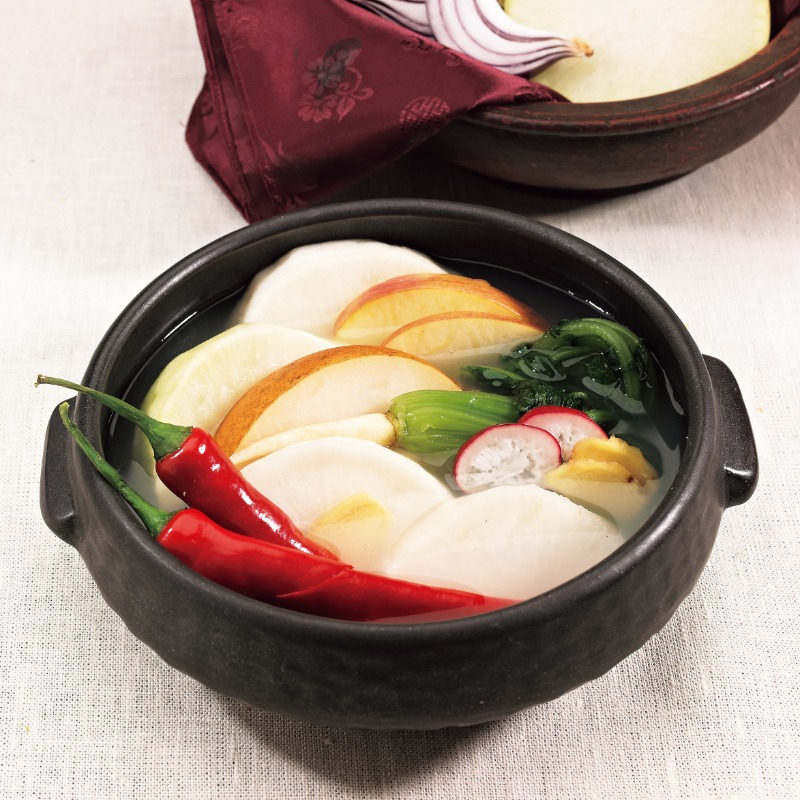
dongchimi, n.
In Korean cuisine: a type of kimchi made with radish and typically also containing napa cabbage, spring onions, green chilli, and pear, traditionally eaten during winter. Cf.
KIMCHI n.
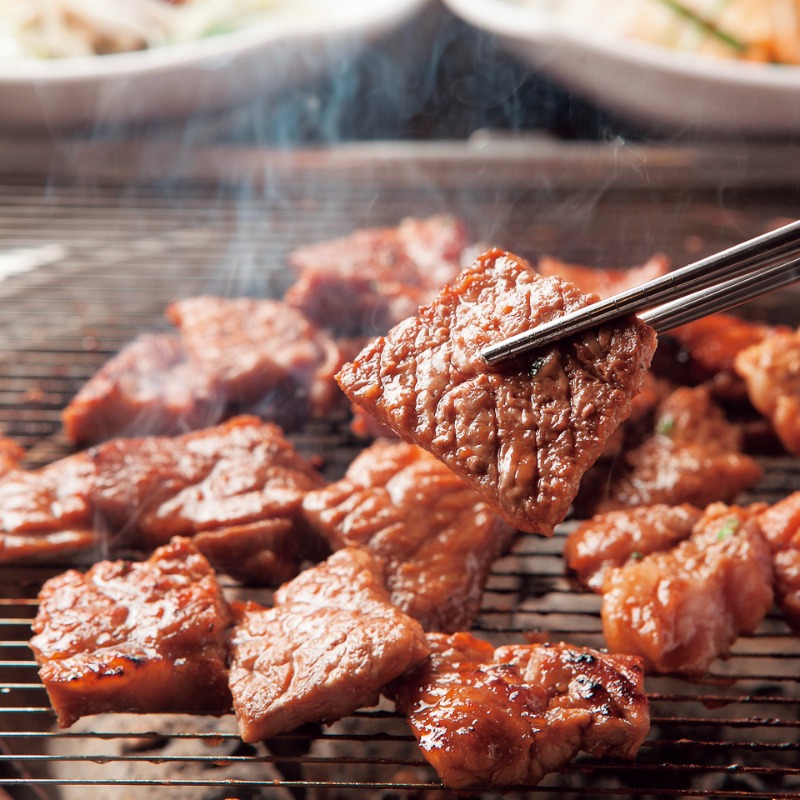
galbi, n.
In Korean cookery: a dish of beef short ribs, usually marinated in soy sauce, garlic, and sugar, and sometimes cooked on a grill at the table.

hanbok, n.
A traditional Korean costume consisting of a long-sleeved jacket or blouse and a long, high-waisted skirt for women or loose-fitting trousers for men, typically worn on formal or ceremonial occasions.
© MBC
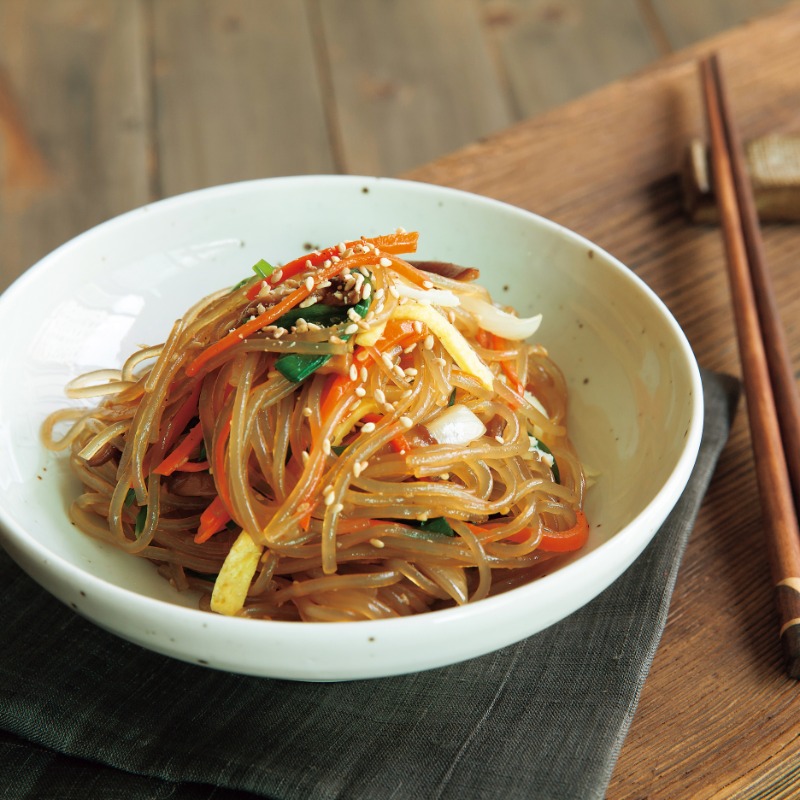
japchae, n.
A Korean dish consisting of cellophane noodles made from sweet potato starch, stir-fried with vegetables and other ingredients, and typically seasoned with soy sauce and sesame oil. Cf.
cellophane noodle n.
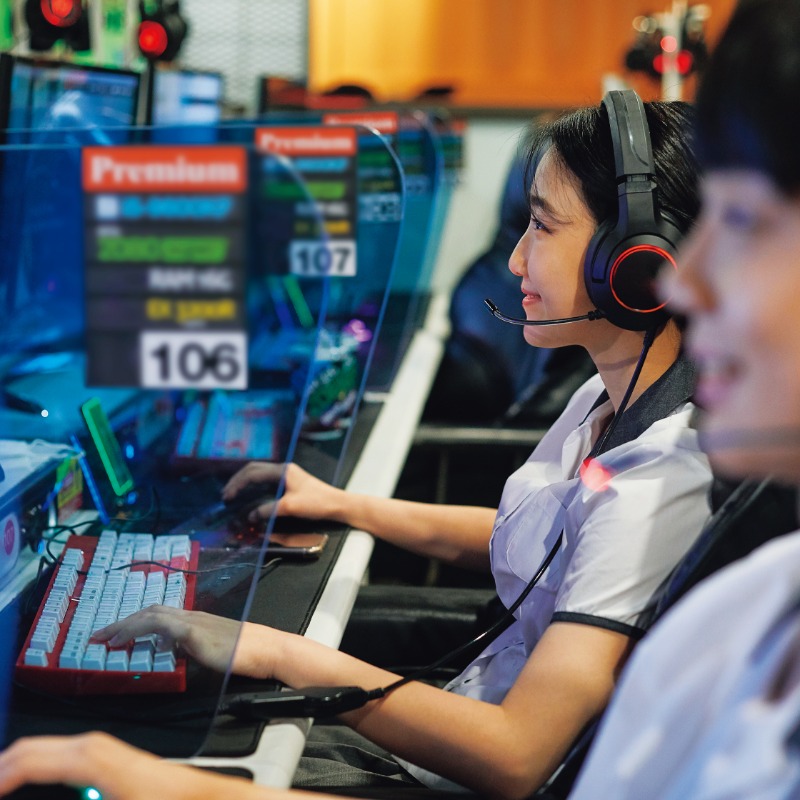
PC bang, n.
In South Korea: an establishment with multiple computer terminals providing access to the internet for a fee, usually for gaming.
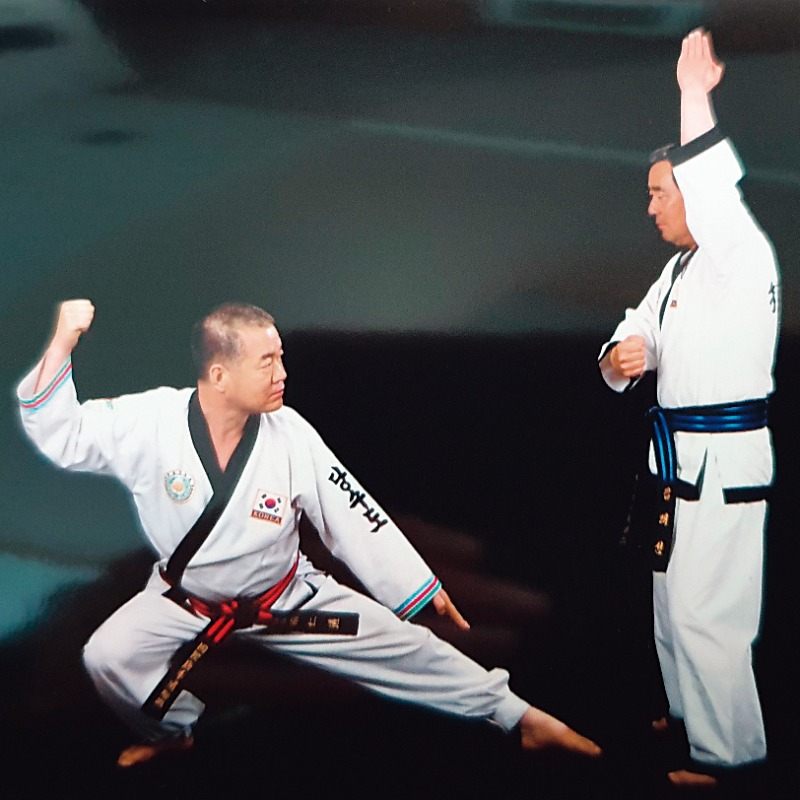
tang soo do, n.
A Korean martial art using the hands and feet to deliver and block blows, similar to karate.
© International Tang Soo Do Federation
Criteria for Inclusion
Several questions came to mind as I worked. Why had there been so few Korean-origin words listed in the OED before? And why were more Korean-origin entries than all the previous entries combined added in the latest update? Who decides which words are to be considered for inclusion and what is the selection process? What is the significance of so many Korean-origin words making it into the OED at once? And what about going forward?
The relatively low representation of Korean in the OED can be attributed to the weak presence of Korean culture in the English-speaking world and a paucity of words of Korean origin in English publications, as well as, to some degree, underrepresentation. For a word to meet the criteria for inclusion in the OED, it must first capture the attention of the editors, have evidence of consistent usage in English writings over a period of time, and be used in the context for which it was intended.
Then what about going forward? The recent addition of 26 Korean-origin words is just the beginning. These words have been constantly heard outside of Korea for at least 15 to 20 years, and compared to when they entered the lexicon, Korean pop culture has surged much higher in global popularity. In particular, Korean content is reaching a larger audience via global streaming platforms, as in the case of the Netflix mega-hit series “Squid Game,” giving international viewers an opportunity to absorb more Korean words than ever before. Hence, the Korean language will only spread further.
Shin Ji-young Professor, Department of Korean Language and Literature, Korea University